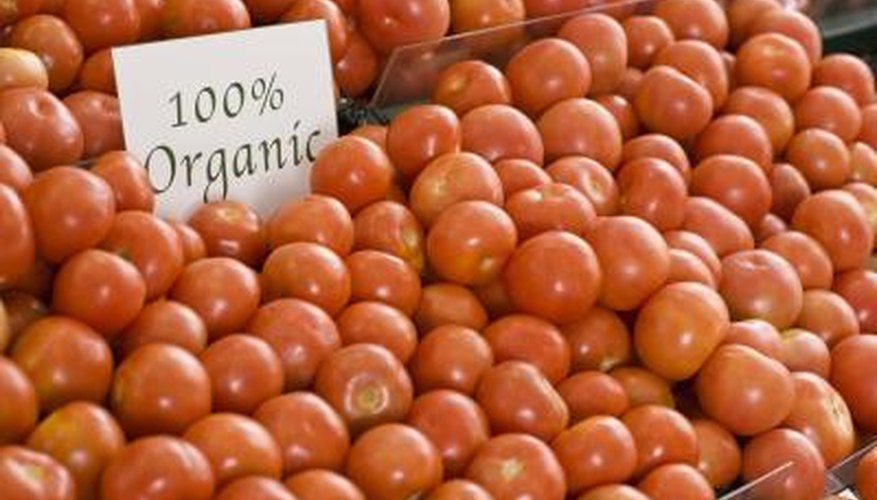The word "pomodoro" means tomato in Italian. Italian-style canned tomatoes are often labelled "pomodoro," which usually indicates that they're seasoned with Italian herbs such as basil and oregano. Although "pomodoro tomato" is redundant, the term is sometimes used to describe an unusually healthy, robust tomato plant, much like the Italian "apples of love" that thrive in warm Mediterranean climates. With careful soil and plant selection, adequate lighting conditions and regular care, you can grow your own healthy tomato plants for a variety of delicious Italian culinary creations.
- The word "pomodoro" means tomato in Italian.
- Although "pomodoro tomato" is redundant, the term is sometimes used to describe an unusually healthy, robust tomato plant, much like the Italian "apples of love" that thrive in warm Mediterranean climates.
Select healthy tomato plants if you're starting with nursery seedlings. Signs of infected transplants include brown or pale green lesions on fruit. Do not select plants with flowers or fruit, since they may be more prone to transplant shock. Look for plants with dark green foliage and strong stems that are approximately the same diameter as a pencil.
Select disease-resistant transplants to avoid common tomato diseases. Some cultivars are resistant to diseases such as verticillium wilt, fusarium wilt and root knot nematodes. Look for the letters V, F and N after the tomato name or ask a nursery employee for disease-resistant plants.
Transplant seedlings after the threat of frost has passed. Tomato plants are very sensitive to cold temperatures and will not tolerate frost. Late spring is usually an ideal time to plant new tomato transplants.
- Select disease-resistant transplants to avoid common tomato diseases.
- Late spring is usually an ideal time to plant new tomato transplants.
Plant tomatoes in full sun. Tomato plants need at least six full hours of sunlight each day to thrive.
Water tomato plants regularly, particularly during dry spells. If you plant your tomatoes in containers, you may need to water them every day or even multiple times each day, depending on your climate. Use mulch to ensure proper irrigation and drainage.
Keep tomato plants away from potato planting sites. Potatoes and tomatoes are both susceptible to late blight, which can remain in the soil and damage tomato plants. Also avoid planting tomatoes near black walnut trees, since the trees release juglone into the soil, a substance that is deadly to tomato plants.
Harvest tomato fruit regularly. Fruits should be firm and pink in colour. If you wait until tomatoes are bright red to harvest, they may scald in the sun or develop cracked skins. Pick them when they're slightly underripe and allow them to ripen indoors for a few days.
- Water tomato plants regularly, particularly during dry spells.
- If you wait until tomatoes are bright red to harvest, they may scald in the sun or develop cracked skins.
Look out for common tomato plant pests and diseases, which include: caterpillars (tomato hornworms); early and late blight; verticillium and fusarium wilt; septoria leafspot; blossom-end rot; and sunscald. Educate yourself about the symptoms of these diseases and pests so you can recognise early signs of a problem.
